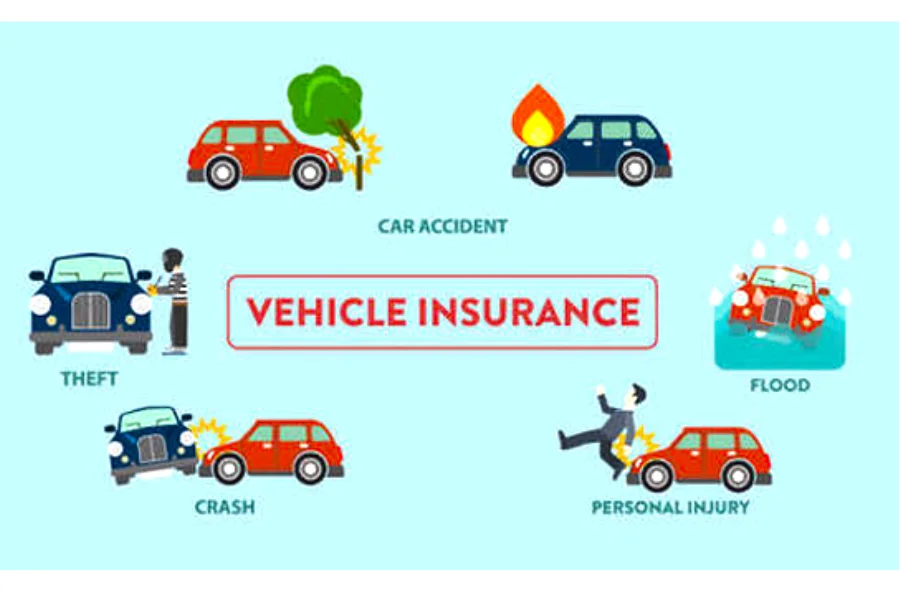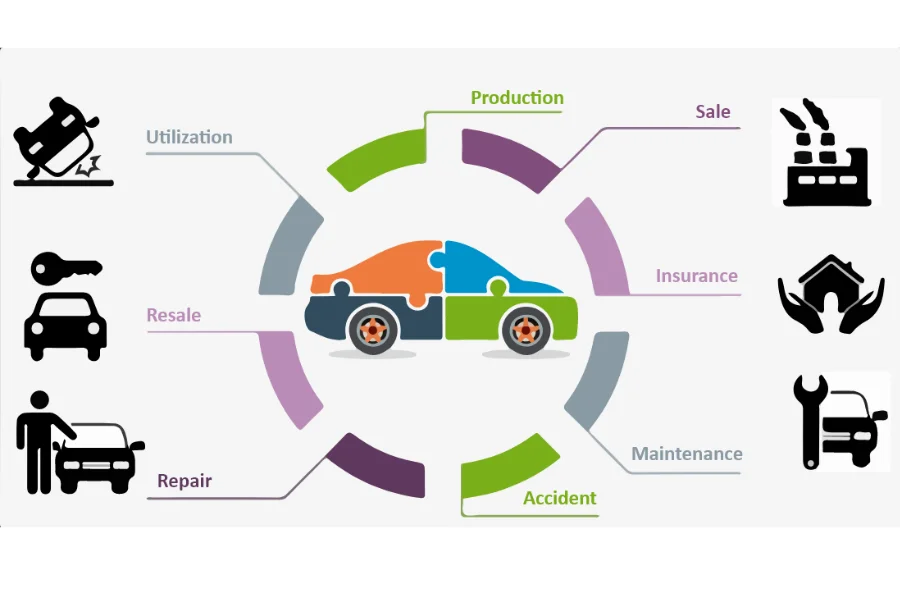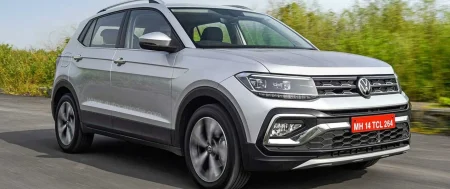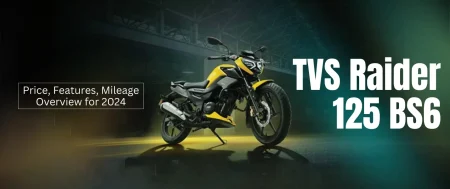In the complex world of vehicle insurance, finding the right coverage requires thorough research and comparison. Vehicle insurance, also known as auto insurance, is a crucial financial safeguard that provides coverage against financial losses resulting from accidents, theft, or other unforeseen incidents involving your vehicle. The primary purpose of vehicle insurance check is to protect both the vehicle owner and others on the road from the financial repercussions of accidents or damage.

Table of Contents
Vehicle insurance covers a diverse range of vehicles, including automobiles like sedans, SUVs, and trucks, as well as motorcycles, recreational vehicles (RVs), commercial vehicles such as taxis and delivery trucks, bicycles, boats, and watercraft, off-road vehicles like ATVs, and even classic or antique cars. Insurance providers offer specialized coverage options for electric and hybrid vehicles.
There is Temporary vehicle insurance provision also which is designed to offer coverage for a specific and short duration, often providing flexibility for situations such as borrowing a friend’s car, renting a vehicle, or using a car for a short-term purpose.Temporary vehicle insurance is known for its quick and convenient application process. This guide aims to explain and offer a step-by-step approach on how to effectively compare the market vehicle insurance in 2024.
Vehicle Insurance: Understanding the Basics
Before diving into the comparison process, it’s crucial to grasp the fundamentals. The specific types of vehicles that can be insured may vary by region and insurance company. Each category of vehicle typically has tailored coverage options to address the unique risks associated with its use. Vehicle insurance comparison involves evaluating multiple insurers to identify the policy that best suits your needs. Key factors to consider include coverage options, premium costs, deductibles, and customer service.

1. Assess Your Insurance Needs
To begin the comparison journey, understand your unique insurance needs. Consider the type of coverage required, whether it’s liability, collision, comprehensive, or a combination. Evaluate your driving habits, the value of your vehicle, and any specific add-ons or discounts you may need.
2. Leverage Online Comparison Tools
In the digital age, online comparison tools are invaluable resources. These tools allow you to input your information once and receive quotes from multiple insurance providers. Take advantage of reputable comparison websites like moneysupermarket to streamline your research process and access a broader range of options.
3. Examine Predictions and Trends for 2024
Staying informed about the predictions and trends in the vehicle insurance market for 2024 is crucial. These predictions are based on ongoing industry shifts and emerging technologies.
4. Evaluate Insurers’ Return to Profitability
Explore how insurers are expected to achieve profitability in 2024 after recent challenges. Assess the impact of this shift on insurance costs for consumers while you compare the market vehicle insurance, as it can influence both pricing and coverage options.
5. Consider Tech Budget Increases and Innovation
Technology plays a pivotal role in shaping the future of vehicle insurance. Evaluate insurers’ approaches to tech innovation and budget increases. Insurers with a commitment to leveraging technology may offer improved services and a more streamlined experience.
6. Navigate Embedded Insurance Adoption
Understand the challenges and opportunities associated with embedded insurance adoption. This innovative approach can offer enhanced customer experiences, but it’s essential to evaluate how well insurers integrate these solutions within the vehicle insurance sector.
7. Factor in Climate Change Considerations
Consider the impact of climate change on insurers’ business decisions. Insurers adapting their risk assessment models and coverage offerings in response to climate change may be better equipped to handle future uncertainties.
8. Embrace Customer-Centric Insurers
In the evolving landscape of non-life insurance, prioritize insurers that emphasize customer-centricity. Look for companies that actively modify their culture and adopt technology to enhance customer experiences.
Overview of Predictions and Trends for vehicle insurance 2024
It’s important to note that the actual trajectory may vary, and the industry will likely continue adapting to evolving circumstances. Here are some potential predictions and trends for vehicle insurance in 2024:

- Integration of Advanced Technologies:
The incorporation of advanced technologies, including telematics, artificial intelligence, and data analytics, is expected to become more widespread. This integration aims to enhance risk assessment, personalize premiums based on individual driving behavior, and streamline claims processes.
2. Focus on Climate Change Resilience:
Climate change considerations are likely to play a significant role in the insurance industry. Insurers may increasingly emphasize environmentally conscious practices, and there might be a surge in coverage options addressing climate-related risks, such as extreme weather events and natural disasters.
3. Increased Emphasis on Cybersecurity:
As vehicles become more connected and reliant on technology, the risk of cyber threats to the automotive industry is expected to rise. Insurers may need to expand coverage to address potential cybersecurity risks, including hacking and data breaches related to connected vehicles.
4. Evolution of Usage-Based Insurance (UBI):
Usage-Based Insurance (UBI), which involves pricing premiums based on actual vehicle usage and behavior, is expected to evolve. Insurers may refine UBI models, offering more flexible and personalized policies that cater to individual driving habits.
5. Shift Towards Digital Customer Experiences:
The insurance industry, including vehicle insurance, is likely to continue its digital transformation. Increased reliance on digital platforms for purchasing policies, filing claims, and accessing customer service is expected, enhancing overall customer experiences.6.Expansion of Embedded Insurance:
Embedded insurance, where insurance is seamlessly integrated into other products or services, may gain further traction in the automotive sector. This could involve partnerships between insurers and vehicle manufacturers to provide coverage directly within the vehicle purchase or lease.
7. Adaptation to Autonomous Vehicles:
As autonomous vehicles become more prevalent, insurers may need to adapt their models to account for new risk factors and liability considerations. The transition to autonomous driving technology may influence how insurance policies are structured and priced.
8. Continued Regulatory Changes:
Ongoing regulatory changes may impact the insurance industry. Adaptations to local, national, and international regulations could influence the structure of insurance policies, particularly in response to emerging risks and technological advancements.
Compare the market vehicle insurance as it demands careful consideration. By assessing your needs because if you are using for a short term then buy temporary vehicle insurance , leveraging online tools, and staying abreast of industry predictions, you can make informed decisions that align with the evolving changes in vehicle insurance in 2024. Prioritize customer-centric insurers, and ride the wave of innovation for comprehensive coverage tailored to your unique requirements. As the vehicle insurance landscape evolves, readers are encouraged to leverage the identified opportunities and overcome challenges. Stay informed, compare the market vehicle insurance diligently, and make choices that align with the dynamic trends of 2024.
Follow for more such content: https://bestgaddi.com/






